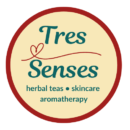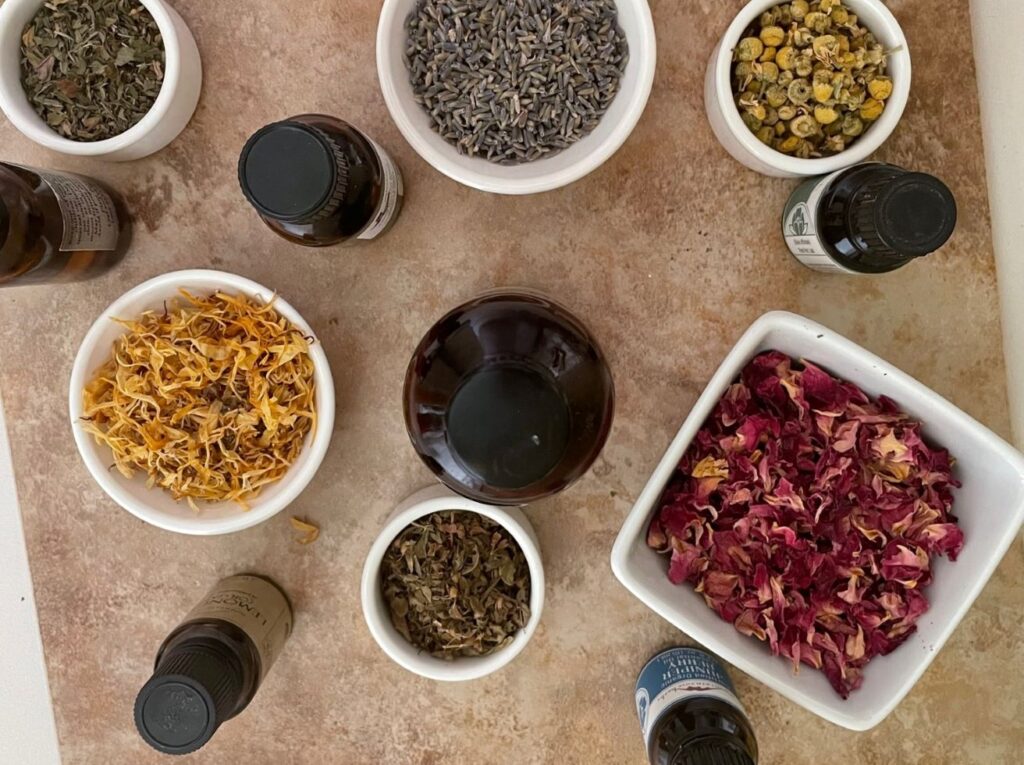Tips for Essential Oil Perfume Blending
Purchasing Quality Essential Oils

Before discussing essential oil blending, I want to share a few things about essential oils to help you feel more comfortable buying them. They are relatively expensive, and there is a reason for that. The distillation process requires a large amount of raw material to make a small amount of essential oil. In the case of roses (one of the most expensive essential oils), it takes 250 pounds of rose blossoms to produce one ounce of rose oil. Most essential oils cost much less than rose oil, but the process still uses large amounts of plant material to make small amounts of oil.
There is a lot of hype about essential oils online, as well as a lot of questions. Which brand is the best?[i] What to look for in essential oil? Is it safe to use essential oil neat (undiluted) on the skin? I will be addressing these questions throughout this article, but one of the main things to be aware of is that fragrance oils and essential oils are not the same things! Fragrance oils are man-made (think synthetic), and essential oils are extractions from various plants via steam or water distillation, and occasionally, cold pressing (citrus oils). Fragrance oils are sometimes touted as natural fragrance oils, but these are still man-made. The natural part is “isolating a “naturally derived component of a complex scent.” https://www.fragrancex.com/blog/fragrance-oils-vs-essential-oils/. Fragrance oils offer none of the natural medicinal or aromatherapeutic benefits of essential oil. Some can be detrimental to a person’s health.
So, what should I look for when purchasing essential oil, and how can I tell if I am buying a quality essential oil? The first thing to consider is the price. Fragrance oils almost always cost less than essential oil. If the price sounds too good to be true, it probably is. Check the labels carefully. Some things to look for are the (botanical name, the country of origin, the distillation date and/or expiration date, the chemotype (if applicable), testing information, organic, unsprayed, or wildcrafted, the company’s association memberships, and the sustainability and cooperatives or initiatives. This information comes from a blog post from The Herbal Academy (a trusted global leader in herbal education with online courses that range from introductory to mastery), and a source to which I turn frequently for answers to my questions. https://theherbalacademy.com/how-to-choose-high-quality-essential-oils/
Essential Oil Fragrance Notes and Families
Notes is an essential oil term that describes the lasting quality of the scent. The categories of notes are top, middle, and base. Top notes are light, often citrusy, energizing, and do not have much staying power. The scent evaporates quickly, sometimes in minutes up to a few hours. Middle notes evaporate at a more moderate rate, lasting several hours. Base notes usually have a woody, resinous scent that lasts longer than the top and middle notes. Base notes can anchor the other notes helping them to last longer and adding depth and complexity to the blended fragrance.
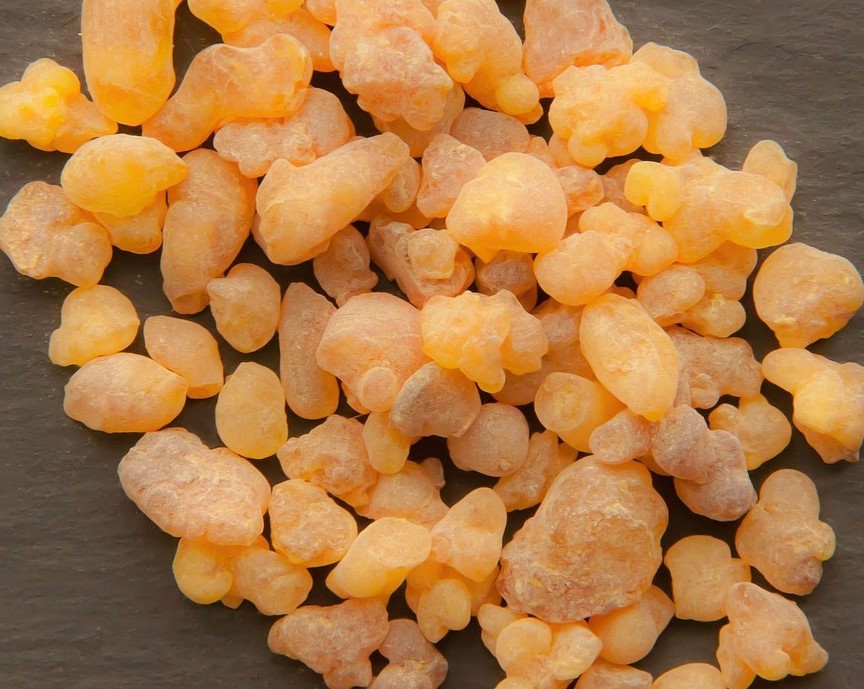
Some examples of essential oils that are considered top notes are citrus oils (orange, lemon, grapefruit, lime), neroli, peppermint, spearmint, basil, lemongrass, and bergamot.
Middle note examples are Linden Blossom, Jasmine, Geranium, Rose, Rosemary, Tea Tree, Clary Sage, Helichrysum, Juniper Berry, Spruce, and Fir Needle.
Base note examples include Patchouli, Vanilla, Frankincense, Sandalwood, Cedarwood, Vetiver, Turmeric, Angelica, and Benzoin.
Some essential oils have a combination of notes as shown below:
Top/Middle – Lavender, Nutmeg, Fennel, Lemon Eucalyptus, and Pine.
Middle/Base – Ylang Ylang, Ginger, and Myrrh.
The essential oil ‘family’ is another term to distinguish the scents into categories such as floral, spicy, woody, citrus, and herbaceous. These terms are more descriptive of the type of scent found in an essential oil. The floral family includes rose, rosewood, lavender, geranium, and other essential oils distilled from flowers. The spicy family is as you would expect – cinnamon, cardamom, clove, ginger, allspice, etc. The woody family includes trees and woody plants – frankincense, pine, cedarwood, and vetiver. The citrus family is made up of essential oils processed from citrus fruits, and the herbaceous family describes essential oils from herbs such as clary sage, thyme, carrot seed, and marjoram.
Carrier Oils for Essential Oil Perfume Blends
What is a carrier oil and why is it necessary?
Essential oils are extremely concentrated and should not be used ‘neat’ (undiluted) on the skin. To do so could cause skin irritation or sensitivity. There are very few essential oils that are safe to use directly on the skin, but those will not be addressed in this article.
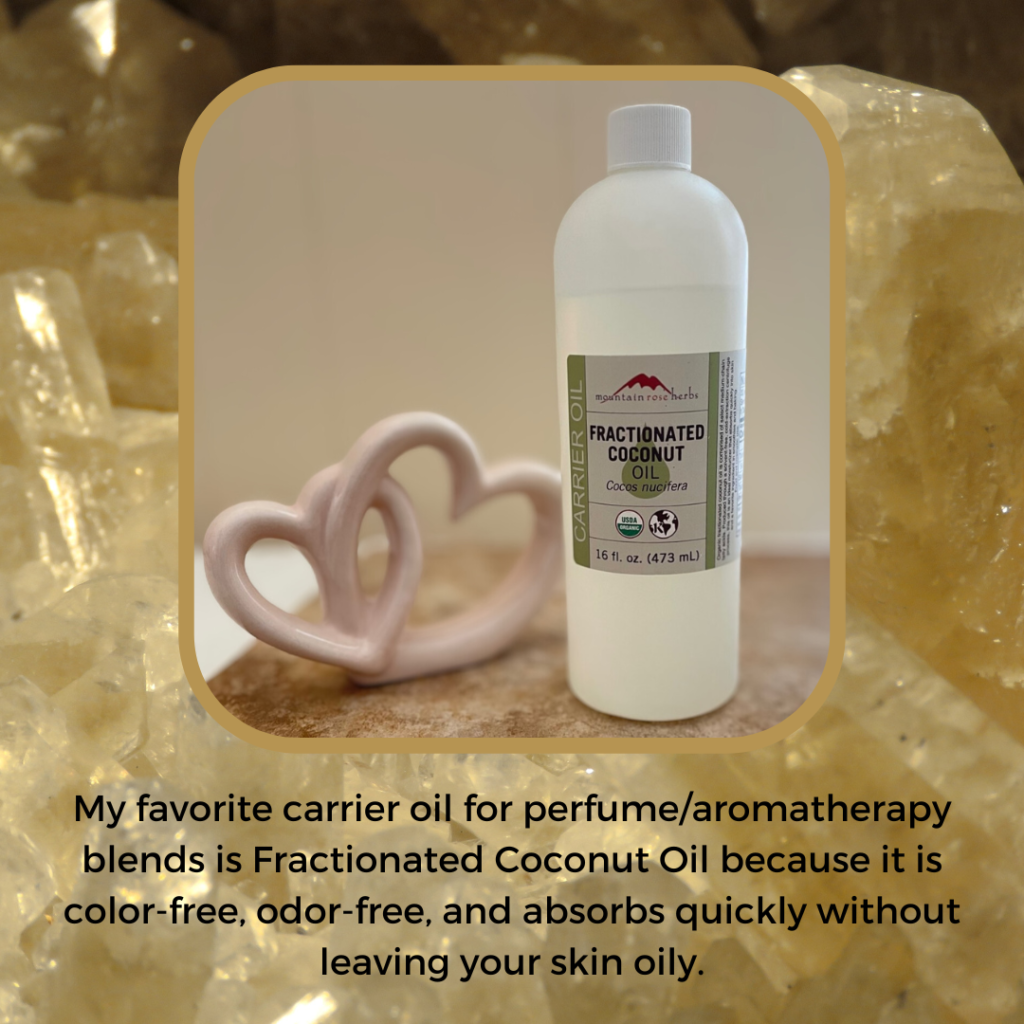
Carrier oils are just what they sound like – a base oil in which to mix your essential oil blends. A few other benefits to using a carrier oil other than skin protection are that the essential oils can blend better and be more stable than when they are mixed without using a carrier oil. Carrier oils are usually derived from vegetables, nuts, and seeds such as olives, apricot kernels, sunflower seeds, grape seeds, and sweet almonds. Of these oils, all except olive oil are light in color and odorless (or nearly odorless), making them excellent choices as a carrier oil for essential oil perfumes.
Other things to look for when selecting a carrier oil are the shelf-life and the processing method. Cold-pressed oil will be better quality than one processed with heat or solvents. You also want to look for an additive-free oil. some carrier oils to avoid are mineral oil (a petrochemical-based oil), soybean oil (probably from a GMO source), corn oil (also likely from a GMO source), peanut oil (likely from a GMO source, and some brands are extracted using solvents), and palm oil (linked to environmental degradation. https://theherbalacademy.com/choosing-essential-oil-carriers/
Blending Tips
When creating a new essential oil blend, it is best to use small quantities and blend in a small, dark bottle. Blending in small amounts allows you to experiment with different blends without wasting a large amount of precious essential oils. There is no need to use your carrier oil at this point, not until you find a blend that you like. A basic ratio to begin with is 3-4 drops of a top-note essential oil, 2 drops middle-note, and 1 drop base note. Be sure to take meticulous notes while blending. You will not remember what you have added, especially when making more than one blend. Trust me on this!
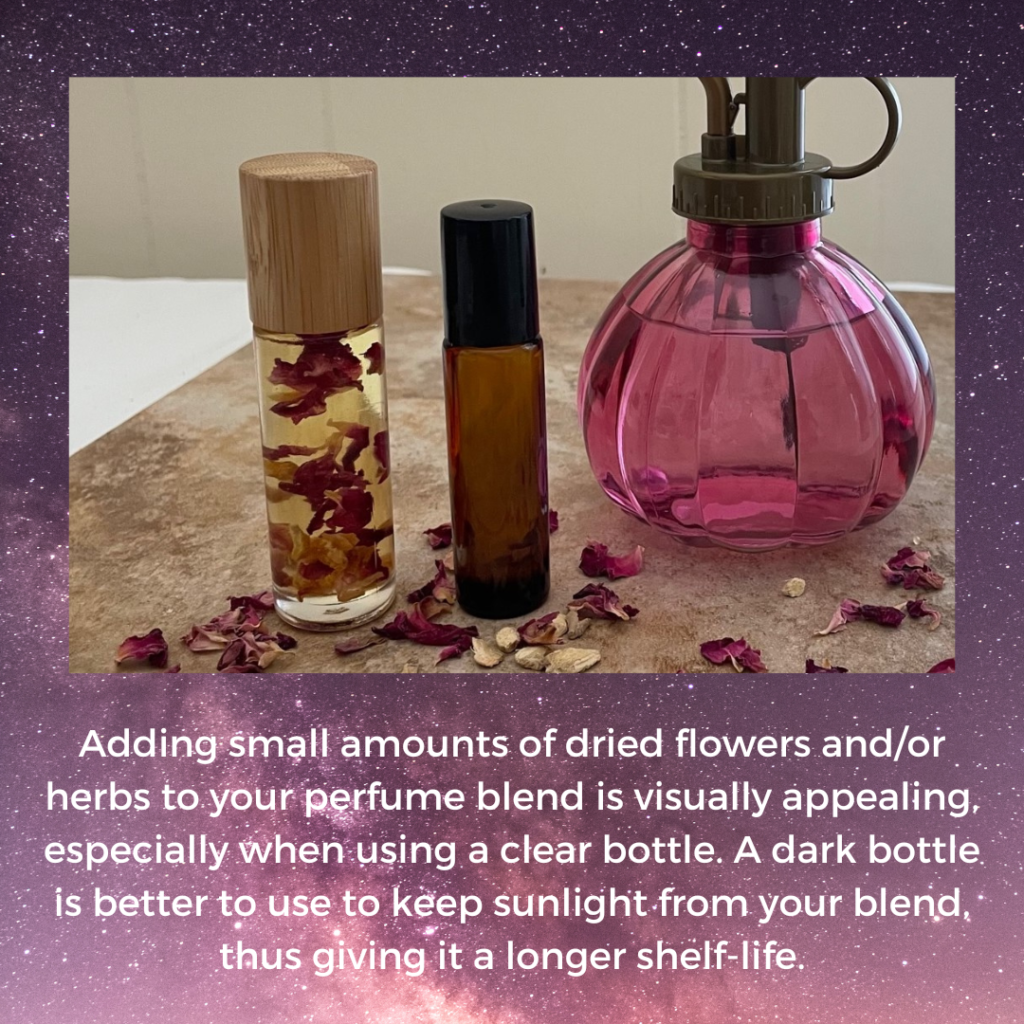
Once you have a blend that you like, let it sit overnight or even for a day or two. This will allow oils to blend, and to fully develop. At that point, you can decide if you like the scent. If so, then you can add the carrier oil at the appropriate dilution rate. Perfume blends generally have a higher concentration of essential oils since they are applied to small areas of the body. They are generally 15% – 30% of the total amount (20 drops of essential oil blend to 80 drops of carrier oil). There are approximately 200 drops in 10 ml; so, if you are using a 10 ml roller bottle, you would use 40 drops of essential oil blend then fill the bottle with the carrier oil.
Myrrh is often used as a ‘fixer’, making the scent last longer. Another way to prolong the life of your blend is by adding a drop or two of Vitamin E oil to it.
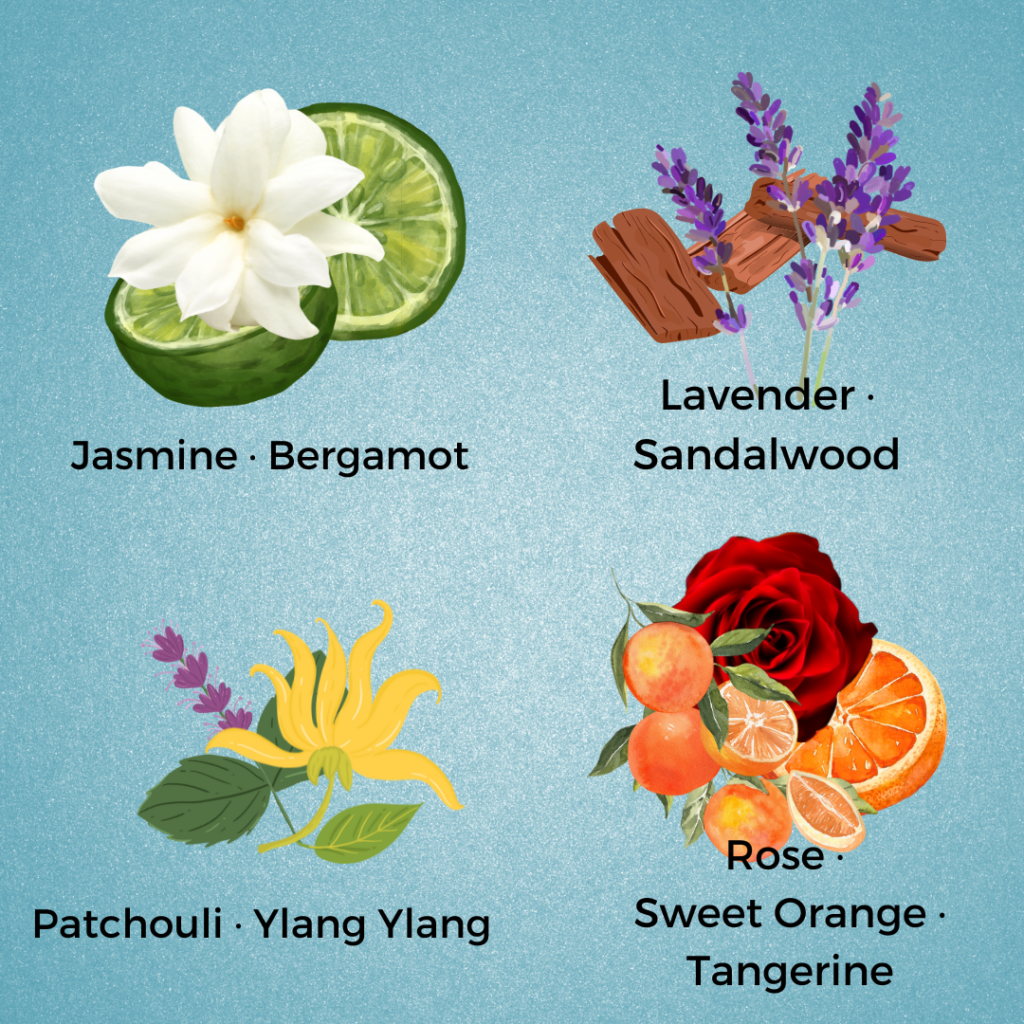
Some successful essential pairings are:
1. Rose, sweet orange, and tangerine
2. Lavender and sandalwood
3. Jasmine and bergamot
4. Patchouli and ylang ylang
5. A blend of palmarosa, bergamot, vetiver, vanilla,
sandalwood, and ylang ylang will create a scent similar to rose.
Essential Oils for Mood
A blend to help relieve anxiety and stress: lavender, ylang ylang, and sweet orange.
A blend of rosemary and lemon could be used as a memory enhancer and is also uplifting and energizing.
Many people associate certain scents with events. These would be specific to the individual, so if you have a special memory that you relate to a scent, try creating an essential oil blend that will take you to your happy place!

[i] Mountain Rose Herbs is my go-to for all my essential oils. They have great quality products, friendly customer service, and fair prices. https://mountainroseherbs.com/
